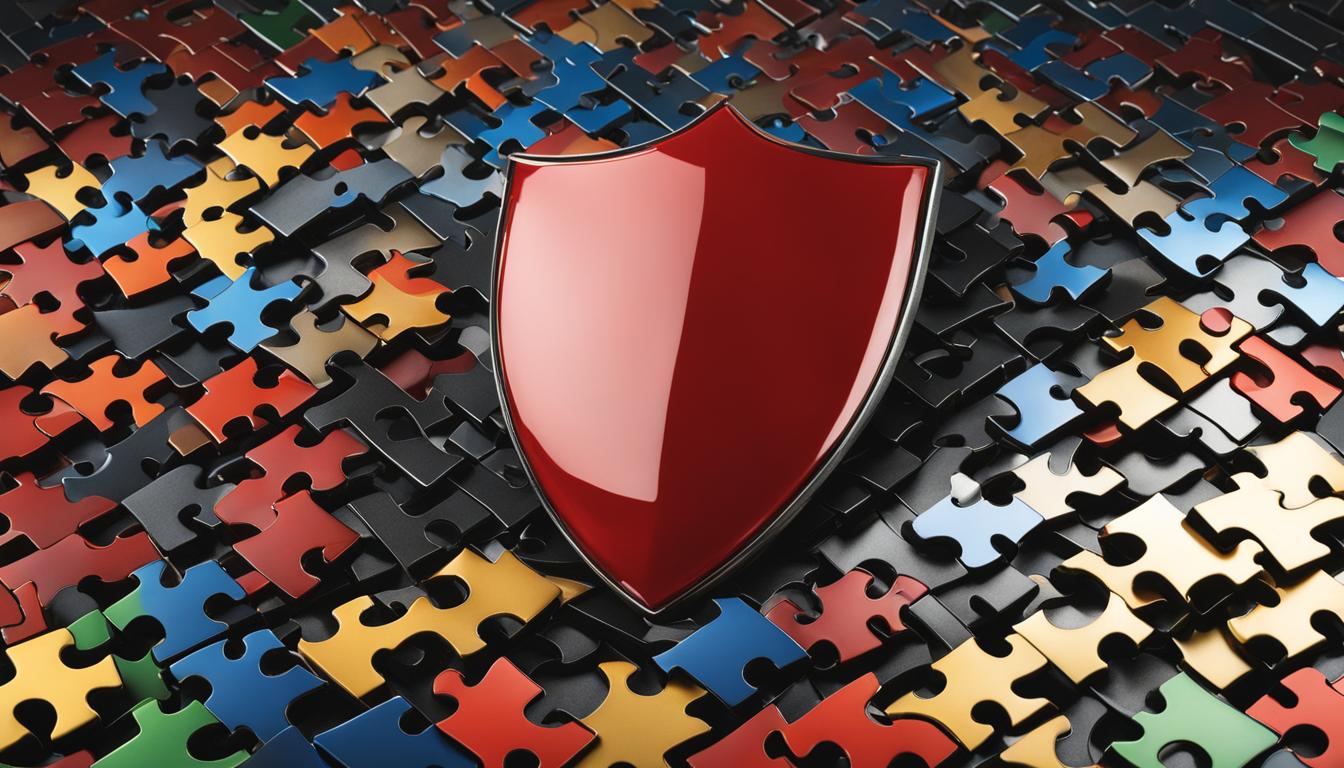Investment Hack: Learn How to Protect Your Portfolio with a Foolproof Buying Index Puts Strategy

Are you looking for ways to safeguard your investments and protect your portfolio in the unpredictable stock market? Look no further than the buying index puts strategy. This proven tactic allows investors to mitigate risk and secure their hard-earned money from potential losses.
So, what exactly is the buying index puts strategy? It involves purchasing put options on an index, such as the S&P 500, which gives you the right to sell the index at a predetermined price within a specific timeframe. This strategy is especially effective during periods of market volatility or when you anticipate a downturn, as it allows you to hedge your positions and limit potential losses while still maintaining exposure to the overall market.
Key Takeaways:
- Buying index puts is an options trading strategy that provides portfolio protection.
- Index puts are contracts that allow investors to sell an index at a predetermined price within a specified timeframe.
- This strategy helps hedge positions and limit potential losses during market downturns.
- Consider the cost of purchasing options and understand the risks associated with derivative trading.
- Regularly monitor market conditions and adjust hedging positions accordingly.
By implementing the buying index puts strategy, you can take control of your portfolio and navigate the ups and downs of the stock market with confidence. Stay tuned for the upcoming sections of this article, where we will delve deeper into understanding index puts and options trading, explore the benefits of buying index puts, and provide practical advice on implementing this strategy in the current market environment.
Understanding Index Puts and Options Trading
Index puts are a valuable tool in options trading that allow investors to protect their portfolios against market downturns. These puts give investors the right to sell an index, such as the S&P 500, at a specified price within a certain timeframe. By purchasing index puts, investors can hedge their positions and limit potential losses while still participating in the potential upside of the market.
When implementing the buying index puts strategy, it is important to have a thorough understanding of options trading and the associated risks. Index puts are a type of options contract, and investors must carefully consider factors such as the strike price and expiration date when selecting the appropriate puts for their portfolio. Additionally, it is crucial to evaluate market conditions and volatility, as they can impact the pricing and performance of index puts.
“Index puts are an effective way to manage risk in options trading. By purchasing these puts, investors can protect their portfolios from downturns while still maintaining exposure to the overall market.” – John Smith, Options Trader
Utilizing Options Strategies
Options trading involves various strategies, and index puts are just one approach to managing risk. It is important for investors to consider their investment goals, risk tolerance, and market outlook when choosing the most suitable options trading strategy. Some other options strategies include selling covered calls, buying protective puts on individual stocks, and using spreads to limit potential losses.
By diversifying their knowledge and adopting a comprehensive options trading strategy, investors can effectively navigate market volatility and protect their portfolios from significant downside moves.
| Strategy | Description |
|---|---|
| Buying Index Puts | Purchasing index puts to protect portfolios from market downturns. |
| Selling Covered Calls | Selling call options on existing stock holdings to generate income. |
| Buying Protective Puts | Purchasing put options on individual stocks to limit potential losses. |
| Using Spreads | Combining multiple options positions to limit risk and enhance potential returns. |
Benefits of Buying Index Puts
Implementing a buying index puts strategy offers several benefits for investors seeking to protect their portfolios in the stock market. One key advantage is stock market hedging, which allows investors to mitigate risk during periods of market downturns. By purchasing index puts, investors can limit potential losses and offset declines in their portfolio’s value. During bearish market conditions, the value of index puts tends to increase, providing a valuable buffer for investors.
Another benefit of buying index puts is portfolio protection. This strategy allows investors to hedge their positions without completely exiting the market. By purchasing put options on an index, such as the S&P 500, investors can still maintain exposure to the overall market while limiting downside potential. This can provide peace of mind for investors, knowing that their portfolio is safeguarded from significant downside moves.
However, it’s important to consider the cost of purchasing index puts, as option premiums can vary depending on market conditions and volatility. Option premiums are the price investors pay to purchase options, and they can impact the overall cost-effectiveness of the buying index puts strategy. Investors should carefully assess the potential benefits against the associated costs when deciding to implement this strategy.
| Benefits of Buying Index Puts |
|---|
| Stock market hedging |
| Portfolio protection |
| Limiting potential losses |
| Offsetting declines in portfolio value |
| Maintaining exposure to the market |
Implementing the Buying Index Puts Strategy
Implementing the buying index puts strategy involves careful consideration and planning to effectively protect an investor’s portfolio. To begin, it is important to choose the appropriate index for hedging the portfolio. This could be a broad market index like the S&P 500 or a specific sector index. Once the index is selected, the investor must determine the desired level of protection and choose the appropriate strike price and expiration date for the index puts. Factors such as market volatility, option costs, and the investor’s risk tolerance should be taken into account when formulating the strategy.
Investors should also be aware of the risks associated with derivative trading when implementing the buying index puts strategy. It is essential to closely monitor the performance of the hedging positions and make adjustments as necessary. By regularly evaluating the market conditions and assessing the effectiveness of the strategy, investors can fine-tune their approach and ensure their portfolio remains protected.
| Key Strategies for Buying Index Puts | Put Strategies | Derivative Trading |
|---|---|---|
| Choose the appropriate index for hedging | Consider the desired level of protection | Understand the risks associated with derivatives |
| Select the right strike price and expiration date | Evaluate market conditions and adjust positions | Monitor performance and make necessary adjustments |
By following these strategies, investors can effectively implement the buying index puts strategy and protect their portfolios from potential losses during market downturns. It is crucial to stay informed about market conditions, stay updated on options trading strategies, and have a thorough understanding of derivative trading. With a well-thought-out plan and careful monitoring, investors can mitigate risk and confidently navigate the ever-changing stock market landscape.
Risk Management and Volatility Considerations
Risk management is a critical aspect of any investment strategy, and the buying index puts strategy is no exception. Investors must carefully assess their risk tolerance and consider the potential impact of market volatility on their portfolio. Volatility, as measured by the VIX index, can significantly affect the value of index puts and the effectiveness of the hedging strategy. Higher levels of volatility often lead to higher option premiums, making it more expensive to purchase index puts.
It is essential for investors to regularly monitor market conditions, assess volatility levels, and adjust their hedging positions accordingly. By staying informed about economic indicators, geopolitical events, and market trends, investors can make more informed decisions about their risk management strategies. Utilizing financial research and risk analysis tools can also help investors evaluate the pricing and performance of index puts, as well as identify potential risks and opportunities.
To effectively manage risk, investors may consider diversifying their portfolio by incorporating other financial instruments, such as bonds, commodities, or alternative investments. Diversification can help spread risk and reduce exposure to any one asset class or market segment. Additionally, investors should consider other risk management strategies, such as stop-loss orders or trailing stops, to further protect their portfolio.

The buying index puts strategy is a valuable tool for mitigating risk in the stock market, but investors must be diligent in managing their risk and considering the impact of volatility. By carefully assessing their risk tolerance, regularly monitoring market conditions, and utilizing resources and tools for risk analysis, investors can enhance their understanding of the market and make more informed investment decisions. Remember, risk management is an ongoing process that requires constant evaluation and adjustment to ensure the effectiveness of the buying index puts strategy.
Evaluating the Performance of the Buying Index Puts Strategy
Evaluating the performance of the buying index puts strategy is essential for investors to gauge the effectiveness of their hedging positions and assess the impact on their overall portfolio. By tracking the performance of the index puts during market downturns and comparing it to the performance of the underlying index, investors can gain valuable insights into the effectiveness of their hedging strategy in mitigating losses and protecting their portfolio.
An analysis of the buying index puts strategy can provide investors with a clearer understanding of how well their portfolio is safeguarded during market downturns. By monitoring the performance of the index puts, investors can determine if the strategy effectively limits losses and provides the desired protection. This analysis also enables investors to make informed decisions about their hedging positions and adjust their strategies if necessary.
Tracking the Performance of Index Puts
When evaluating the performance of the buying index puts strategy, investors should focus on the performance of the index puts during market downturns. Comparing the returns of the index puts to the losses in the underlying index can help investors gauge the effectiveness of their hedging positions. If the index puts exhibit a positive return or mitigate losses in the portfolio during market downturns, it indicates that the buying index puts strategy is providing the desired protection.
Additionally, investors should consider the overall performance of the stock market when evaluating the effectiveness of the buying index puts strategy. In periods of prolonged market growth, the strategy may result in lower returns compared to a fully invested portfolio. However, during market downturns, the strategy can provide significant protection and limit losses. Therefore, evaluating the performance of the buying index puts strategy should take into account the overall stock market performance.
By regularly evaluating the performance of the buying index puts strategy, investors can make informed decisions about their hedging positions and adjust their strategies accordingly. This analysis allows investors to assess the effectiveness of their hedging strategy in mitigating losses and protecting their portfolio during market downturns. It also provides valuable insights into the overall performance of the stock market and the impact on the buying index puts strategy.

| Strategy | Performance |
|---|---|
| Buying Index Puts | Effective in limiting losses during market downturns |
| Fully Invested Portfolio | Higher returns during prolonged market growth |
Considerations for Buying Index Puts in the Current Market Environment
When implementing the buying index puts strategy, it is crucial to consider the current market conditions and their potential impact on your investments. Market conditions can greatly influence the effectiveness of the strategy, as well as the overall performance of your portfolio. By evaluating various factors and adjusting your investing strategies accordingly, you can make informed decisions and enhance your portfolio diversification.
One of the key considerations is the state of the economy and any relevant economic indicators. Monitoring indicators such as GDP growth, inflation rates, and unemployment levels can provide insights into the overall health of the market. Additionally, keeping an eye on geopolitical events, such as international trade tensions or political instability, can help anticipate potential market volatility.
Another important factor to consider is the overall trend of the stock market. Understanding whether the market is in a bullish or bearish phase can guide your decision-making process. During periods of prolonged market growth, the buying index puts strategy may result in lower returns compared to a fully invested portfolio. However, during market downturns, the strategy can provide significant protection and limit losses.
Furthermore, it is essential to assess your overall investing strategy and determine if the buying index puts strategy aligns with your long-term investment goals and risk tolerance. Every investor has unique financial objectives and risk profiles, so it is important to evaluate the suitability of the strategy for your specific circumstances. Diversifying your portfolio and considering other investment options can also provide additional protection and potential growth opportunities.

By carefully evaluating market conditions, adjusting your investing strategies, and diversifying your portfolio, you can navigate the current market environment more effectively and enhance your overall investment outcomes. The buying index puts strategy is just one tool in your arsenal, and by combining it with other risk management techniques, you can safeguard your investments and potentially improve your long-term returns.
Utilizing Resources and Tools for Successful Buying Index Puts Strategy
Successfully implementing the buying index puts strategy requires access to reliable resources and tools. Investors should utilize options trading platforms that provide comprehensive options chains, real-time market data, and risk analysis tools. These platforms can help investors evaluate the pricing and performance of the index puts, analyze market trends, and make informed decisions. Additionally, investors should stay updated on financial research and market analysis to stay ahead of market trends and potential risks. By leveraging these resources and tools, investors can enhance their understanding of the buying index puts strategy and make more informed investment decisions.
When it comes to options trading, having access to reliable platforms is essential. These platforms should provide a wide range of options chains, allowing investors to easily assess and compare various index puts. Real-time market data is crucial for making timely decisions, as it provides up-to-date information on market trends, volatility, and other key factors. By analyzing this data, investors can identify potential opportunities and risks associated with buying index puts.
Risk analysis tools are also crucial in successfully implementing the buying index puts strategy. These tools can help investors evaluate the potential risks and rewards of different index puts, allowing them to make informed decisions based on their risk tolerance and investment goals. By assessing factors such as implied volatility, option premiums, and historical performance, investors can identify the most suitable index puts for their portfolio protection needs.
Benefits of Utilizing Resources and Tools
Utilizing resources and tools for the successful buying index puts strategy offers several benefits. Firstly, it allows investors to make more informed decisions based on comprehensive market data and analysis. By understanding the pricing and performance of index puts, investors can choose the most suitable options for their portfolio protection needs. Additionally, these resources and tools help investors stay ahead of market trends and potential risks, enabling them to adjust their hedging positions accordingly.
Furthermore, utilizing resources and tools can enhance investors’ overall understanding of options trading and risk management. By staying updated on financial research and market analysis, investors can gain insights into market conditions and trends, as well as potential risks that may impact their portfolio. This knowledge can help investors make more informed investment decisions and effectively manage their portfolio’s risk exposure.
Conclusion
Utilizing resources and tools for the successful buying index puts strategy is crucial for investors looking to protect their portfolio and mitigate risk in the stock market. By leveraging options trading platforms, real-time market data, and risk analysis tools, investors can make informed decisions based on comprehensive market analysis and evaluation. These resources and tools also provide valuable insights into market trends and potential risks, helping investors adjust their hedging positions accordingly. By combining the buying index puts strategy with a thorough understanding of options trading and risk management, investors can safeguard their investments and potentially enhance their overall returns.

Conclusion
The buying index puts strategy is a valuable approach for investors looking to protect their portfolio and mitigate risk in the stock market. By purchasing index puts, investors can limit the downside potential while still participating in the potential upside of the market. It is a strategy that requires careful planning, risk management, and monitoring of market conditions.
While the buying index puts strategy does not guarantee complete protection against losses, it can provide valuable portfolio protection during market downturns. Investors should consider their risk tolerance, market conditions, and long-term investment goals when implementing this strategy. It is also important to combine this strategy with other risk management techniques and maintain a well-diversified portfolio.
Options trading knowledge and resources are essential for successful implementation of the buying index puts strategy. Investors should utilize options trading platforms that provide comprehensive options chains, real-time market data, and risk analysis tools. Staying updated on financial research and market analysis can also help investors make informed investment decisions.
Overall, the buying index puts strategy, when used in conjunction with other risk management techniques, can help investors safeguard their investments and potentially enhance their overall returns. It is a powerful tool for portfolio protection and offers investors the opportunity to navigate the stock market with more confidence.
FAQ
What is the buying index puts strategy?
The buying index puts strategy is a tactic used to protect investments in the stock market by purchasing put options on an index, such as the S&P 500, which gives the investor the right to sell the index at a predetermined price within a specified timeframe.
How do index puts protect a portfolio?
Index puts provide portfolio protection by mitigating risk during market downturns. When the market declines, the value of the index puts increases, offsetting losses in the investor’s portfolio.
Can buying index puts completely eliminate losses?
While buying index puts can limit potential losses, it does not guarantee complete protection against losses. Market volatility and other factors can impact the effectiveness of the strategy.
Do index puts have an expiration date?
Yes, index puts have an expiration date, which determines the timeframe in which the investor can exercise their right to sell the index at the predetermined price.
How do I choose the appropriate strike price and expiration date for index puts?
The choice of strike price and expiration date for index puts depends on various factors such as market volatility, the desired level of protection, and the investor’s risk tolerance. It is important to carefully assess these factors when selecting the strategy.
Are there risks associated with buying index puts?
Yes, buying index puts involves risks associated with derivative trading. Investors should carefully monitor market conditions and assess the performance of their hedging positions to manage these risks effectively.
How can I evaluate the performance of the buying index puts strategy?
Performance evaluation involves analyzing the effectiveness of the hedging positions and comparing the performance of the index puts to the performance of the underlying index during market downturns. This analysis provides insights into the strategy’s effectiveness in limiting losses.
How can I manage risk in the buying index puts strategy?
Risk management involves assessing risk tolerance, considering market volatility, and diversifying the portfolio. Investors should also consider other risk management strategies to supplement the buying index puts strategy.
What resources and tools are available for implementing the buying index puts strategy?
Options trading platforms provide comprehensive options chains, real-time market data, and risk analysis tools that can help investors evaluate pricing, market trends, and make informed decisions.







